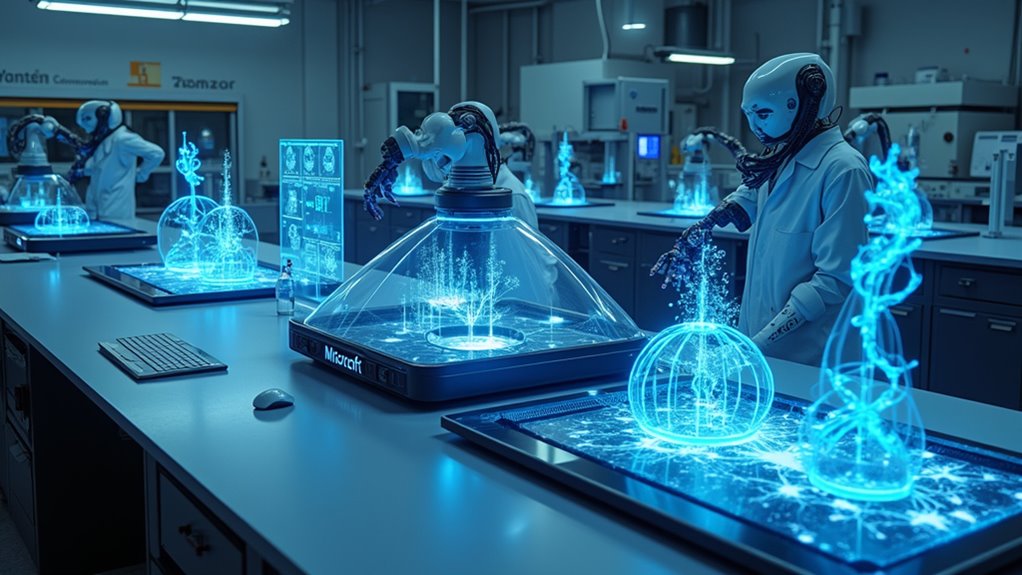TSMC is crushing it right now, with market share projected to hit a whopping 66% by 2025 while Intel scrambles to keep up. Think Game of Thrones, but with semiconductors instead of swords. The chip titan’s dominance comes amid booming AI demand that’s pushing the industry toward that sweet $1 trillion milestone. With a market cap second only to Nvidia’s $3.05 trillion empire, TSMC’s strategic moves reveal how dramatically the silicon landscape is shifting.
Taiwan Semiconductor Manufacturing Company (TSMC) is crushing it in the global chip wars, extending its dominance to seemingly untouchable levels that have competitors scrambling to keep up. The numbers tell a jaw-dropping story – TSMC’s traditional foundry market share is set to climb from an already impressive 59% in 2023 to a whopping 66% by 2025. That’s not market leadership; that’s market domination.
TSMC isn’t just winning the chip race—it’s lapping the competition while rewriting the rules of semiconductor dominance.
TrendForce’s recent report shows TSMC commanded a 67.1% share in Q4 2024, up from 64.7% the previous quarter. If chips were a TV show, TSMC would be raking in Game of Thrones-level ratings while others struggle to match sitcom numbers.
What’s even more fascinating is TSMC’s expansion into Foundry 2.0, where they’re expected to grow from 28% market share in 2023 to 37% by 2025. They’re basically playing chess while competitors are still figuring out checkers. Like other industry leaders, TSMC is leveraging AI technologies to automate repetitive manufacturing tasks and enhance efficiency.
The semiconductor industry itself is booming, with 15% growth projected for 2025 and global sales expected to hit $697 billion. This aligns perfectly with Deloitte’s prediction that the industry is on track to reach US$1 trillion in chip sales by 2030. TSMC continues to maintain its competitive edge by manufacturing chips for industry giants like Nvidia using advanced equipment from ASML. At current rates, we’re looking at a $1 trillion industry by 2030 and possibly $2 trillion by 2040. That’s a lot of silicon, folks.
Behind this growth surge? AI is the rocket fuel. Generative AI and data center build-outs are driving chip demand to stratospheric levels. Companies in the AI chip market are outperforming industry averages by miles, not inches.
The market cap story tells it all – the top 10 chip companies reached a combined value of $6.5 trillion in December 2024, nearly doubling from the previous year. Nvidia leads the pack at $3.05 trillion, with TSMC firmly in second place.
It hasn’t all been smooth sailing, though. January’s DeepSeek AI model debut triggered semiconductor stock tumbles, erasing nearly $600 billion from Nvidia’s market cap alone.
Add in geopolitical tensions and inventory challenges, and the chip wars continue to serve up plot twists worthy of a Hollywood thriller.









